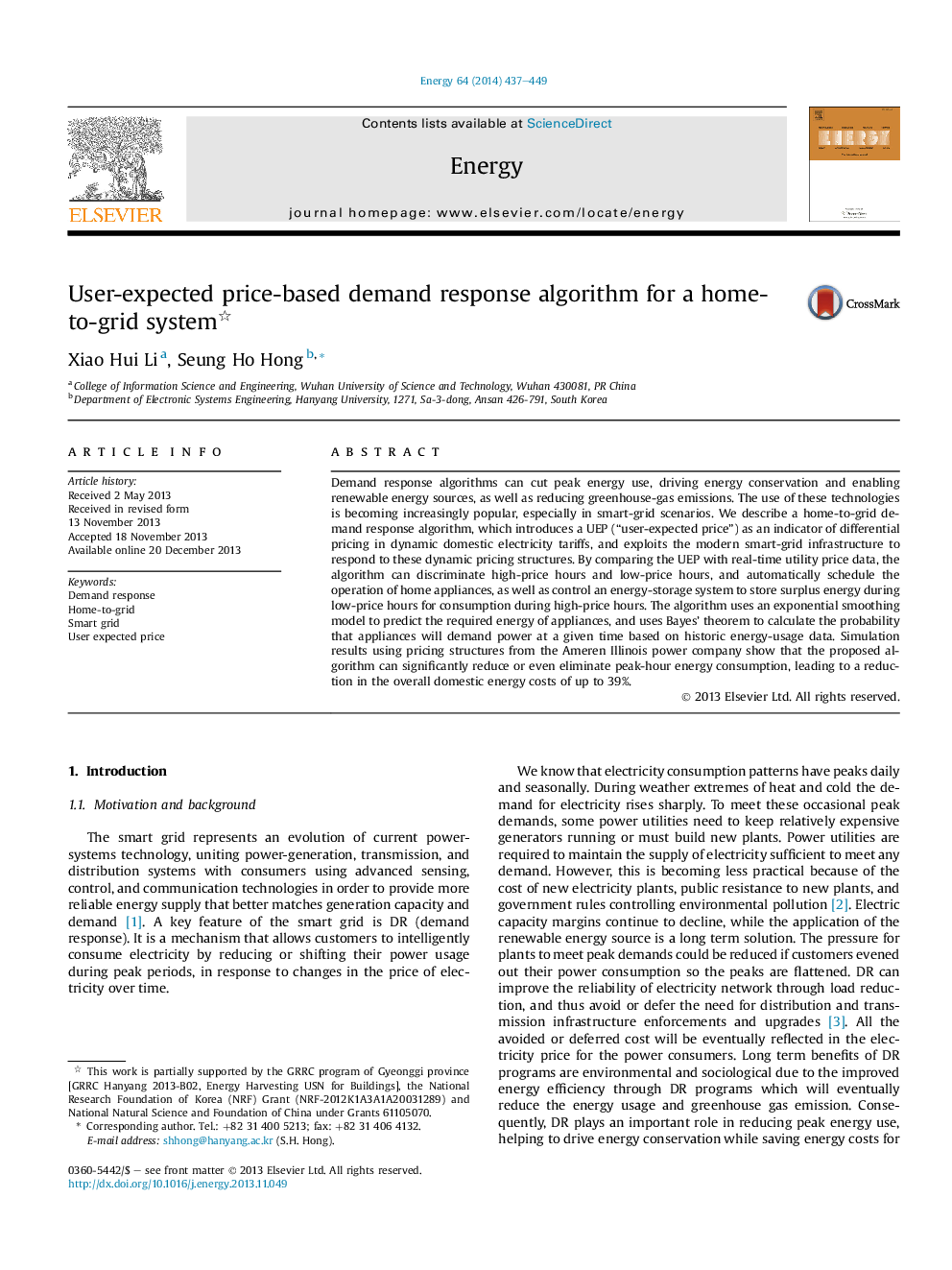| Article ID | Journal | Published Year | Pages | File Type |
|---|---|---|---|---|
| 8078747 | Energy | 2014 | 13 Pages |
Abstract
Demand response algorithms can cut peak energy use, driving energy conservation and enabling renewable energy sources, as well as reducing greenhouse-gas emissions. The use of these technologies is becoming increasingly popular, especially in smart-grid scenarios. We describe a home-to-grid demand response algorithm, which introduces a UEP (“user-expected price”) as an indicator of differential pricing in dynamic domestic electricity tariffs, and exploits the modern smart-grid infrastructure to respond to these dynamic pricing structures. By comparing the UEP with real-time utility price data, the algorithm can discriminate high-price hours and low-price hours, and automatically schedule the operation of home appliances, as well as control an energy-storage system to store surplus energy during low-price hours for consumption during high-price hours. The algorithm uses an exponential smoothing model to predict the required energy of appliances, and uses Bayes' theorem to calculate the probability that appliances will demand power at a given time based on historic energy-usage data. Simulation results using pricing structures from the Ameren Illinois power company show that the proposed algorithm can significantly reduce or even eliminate peak-hour energy consumption, leading to a reduction in the overall domestic energy costs of up to 39%.
Keywords
Related Topics
Physical Sciences and Engineering
Energy
Energy (General)
Authors
Xiao Hui Li, Seung Ho Hong,
